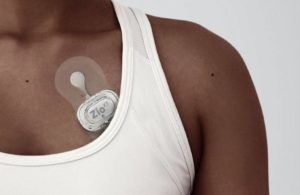
iRhythm Technologies (Nasdaq:IRTC) today announced findings supporting its Zio XT wearable heart monitoring technology.
San Francisco-based iRhythm presented multiple new studies at the American College of Cardiology’s Annual Scientific Session Together With the World Congress of Cardiology (ACC.23/WCC).
The Camelot study compared effectiveness of ambulatory monitors for arrhythmia diagnosis. It demonstrated that long-term continuous monitoring with iRhythm Zio XT is associated with the highest diagnostic yield and fastest time to clinical diagnosis compared to all other ambulatory cardiac monitors (ACMs) when looking at specified arrhythmias.
Additionally, Zio XT demonstrated the lowest likelihood of retesting compared to all other ACMs. It also recorded the lowest acute healthcare resource utilization compared to all other ACMs.
Camelot used real-world Medicare data. It sought to evaluate the yield of clinical diagnosis, retesting rates and healthcare utilization across ambulatory cardiac monitoring. That includes Holter, long-term continuous monitoring, mobile cardiac telemetry and ambulatory event monitoring.
Principally, the study found that Zio XT — prescribed for up to 14 days — provides the highest diagnostic yield and fastest time to diagnosis. It demonstrated the lowest odds of 180-day retesting and the lowest risk of hospitalization.
“An important milestone” for iRhythm
Dr. Suneet Mittal, director of electrophysiology at Valley Health System, presented the study. Mittal said providers have the choice of various types of ECG monitors and vendors. However, nobody made an attempt to determine whether the choices influence important endpoints, Mittal explained.
“The Camelot study provides real-world evidence that these choices indeed impact these outcomes and may inform how providers make these choices in clinical practice,” said Mittal.
Findings demonstrated that all other monitoring services presented odds of clinical arrhythmia diagnosis between 20% and 50% less than Zio XT. This determination came after controlling for other variables. All other monitors recorded 1.4 to 5.7 greater odds of subsequent retesting compared to Zio XT.
“Camelot shows how consequential choosing the right monitoring service can be, from achieving a faster clinical diagnosis leading to reduced repeated testing all the way to lower emergency and inpatient health care utilization and lower costs,” said Dr. Mintu Turakhia, CMO and CSO at iRhythm.
Other data presented
iRhythm also presented data from its Zio monitor post-approval extended wear study. It compared Zio XT with the next-generation Zio monitor.
The study found that Zio demonstrated even higher compliance, plus higher ECG analyzable time. It also offered increased wear time and improved signal quality compared to Zio XT. iRhythm said it has the potential to “greatly improve monitoring and decision-making.”
According to the company, it designed the new Zio with “even greater patient comfort in mind.” It features a new, wearable biosensor that registers 72% smaller and 55% lighter with a new, breathable adhesive. iRhythm currently has a limited commercial release ongoing in the U.S. It plans for a broader launch later this year.
iRhythm said it also found in another study that non-sustained ventricular tachycardia was independently associated with increased mortality. The company said it may act as a proxy biomarker for cardiovascular risk.